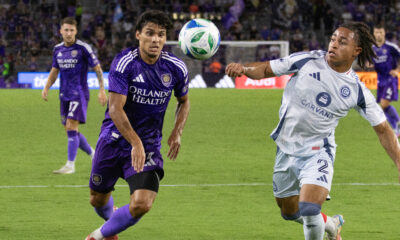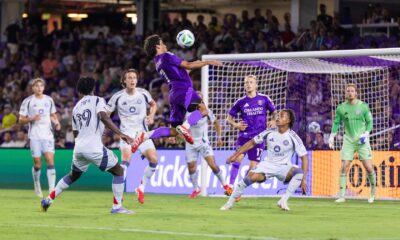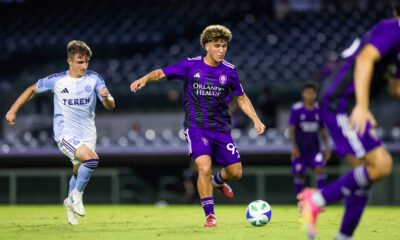Opinion
Thoughts from Orlando City’s Open Training Session
What did we learn from an early morning summer scrimmage?
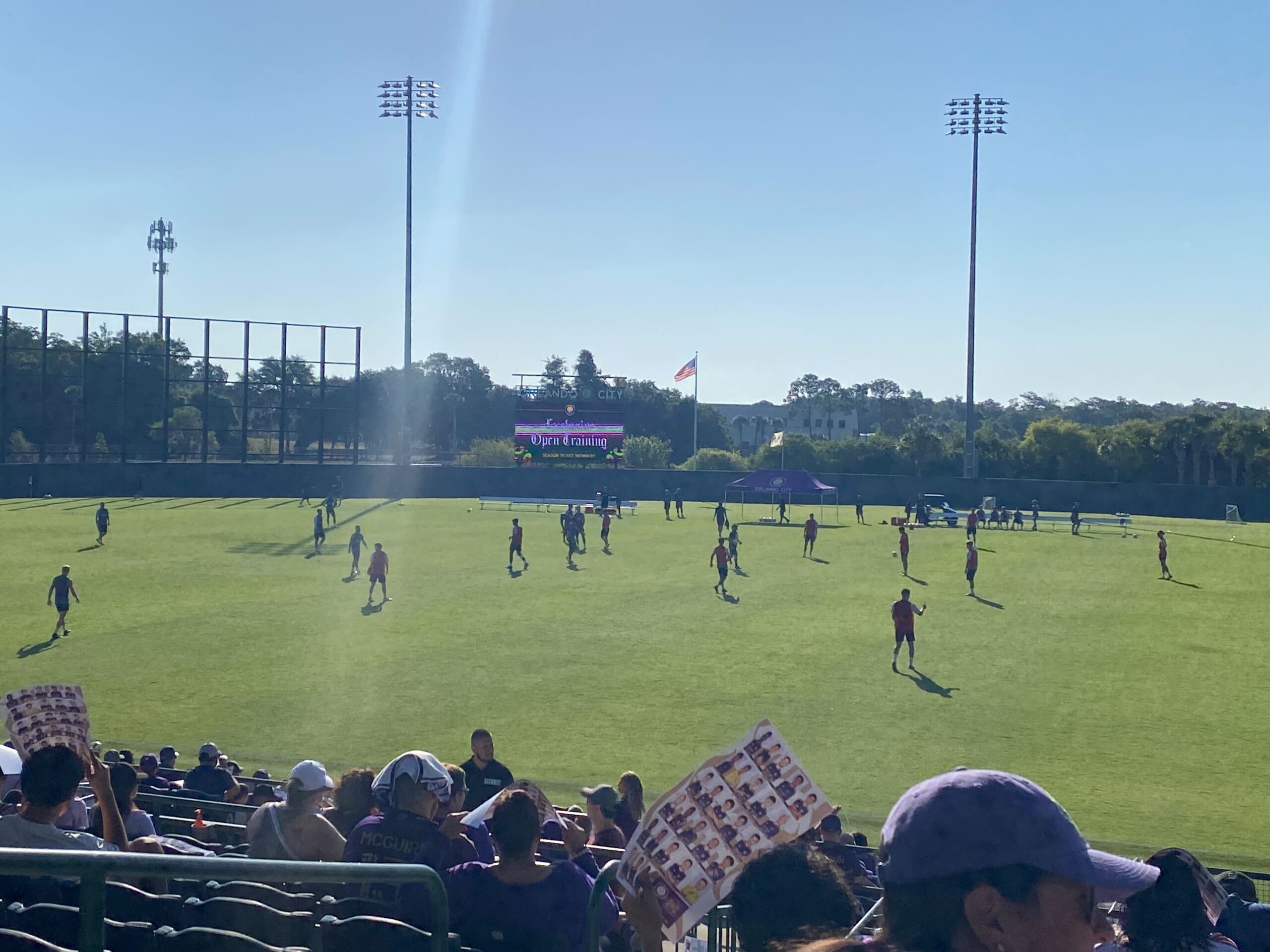
Orlando City opened up the gates of its training facility today for season ticket members to take in a morning training session. The team took the field close to 8:30 a.m. and proceeded to run a first team vs. second team scrimmage for the better part of an hour. The first team was made up of mostly regular-season starters with the exception of those players currently representing their countries on international duty or those rehabbing injuries.
Efforts put in during practice and on the training pitch should always be taken with a small grain of salt, but what follows are my rapid reactions from a hot and sunny training morning.
4-4-2 Formation
The first-team Lions took the field in a 4-4-2 configuration with the likes of Rodrigo Schlegel, Nico Lodeiro, and Luis Muriel on the pitch in their usual positions. Prior to the last match, it appeared as if Orlando might move away from the 3-5-2, but it never changed back from the shape used for the better part of the last month. I do, however, expect that the team will utilize a four-man back line when Orlando City takes the pitch again on June 15 against LAFC with Duncan McGuire and Muriel up top.
The action during the scrimmage period was mostly one sided, but without playmakers like Facundo Torres on the pitch during training, it seemed as if most of the action was funneled through Ivan Angulo up the left side of the field. The back line played well together in the scrimmage but did allow the second-team players to complete several long balls from time to time.
Old Habits Die Hard
One of the things I was most interested to observe during the training session was how the team attacked the goal and how aggressive their shot taking would be. Unfortunately, it does appear that the old saying “you play how you practice” could be seen in full force as several culprits who have shown bad decision-making during matches used the same poor decision-making in practice. I wish that I could say the results were different but they were not. There are still a handful of players who are very touch happy and often missed out on opportunities to take shots by trying to over dribble or by being too cute with combination passes in the box.
For a team that mustered fewer shot attempts than I have digits on one hand during its last outing against the New York Red Bulls, I would love to see the boys in purple pull the trigger from anywhere and at any time. It seems as though some of the offensive issues that have plagued the attack during matches is coming from habits shown on the training ground.
Jack Lynn’s Impressive Scrimmage
With McGuire away with the U-23 USMNT squad and Ramiro Enrique not on the training pitch, Jack Lynn started alongside Muriel up top for the first team. Lynn was easily the most impressive player from the training session today, scoring in a variety of ways that show he has continued to put in effort behind the scenes to improve his quality. While he may be lacking some of the pure athleticism of McGuire or the savvy of Muriel, Lynn continued to press toward goal throughout the scrimmage and I stopped counting after his third goal.
My favorite effort of his during the session was his first shot on frame, which was a beautiful curling ball from outside the 18 into the upper 90. Lynn has shown glimpses of his ability when he has been called upon this year and may be in line for more playing time depending on how the summer transfer window shakes out. Based upon the effort of the training session today, he will be ready when his number is called.
All in all, even under the hot Florida summer sun, it was a really nice event that the club put on for season ticket members of all ages, and I hope to see Orlando City host more of these events in the future. The Lions are on a bye week and will look to get back to their winning ways on June 15 at home against LAFC. Vamos Orlando!
Opinion
Predicting Orlando City’s June Results
It’s time to take a glimpse into the future and predict how Orlando City will fare during the month of June.
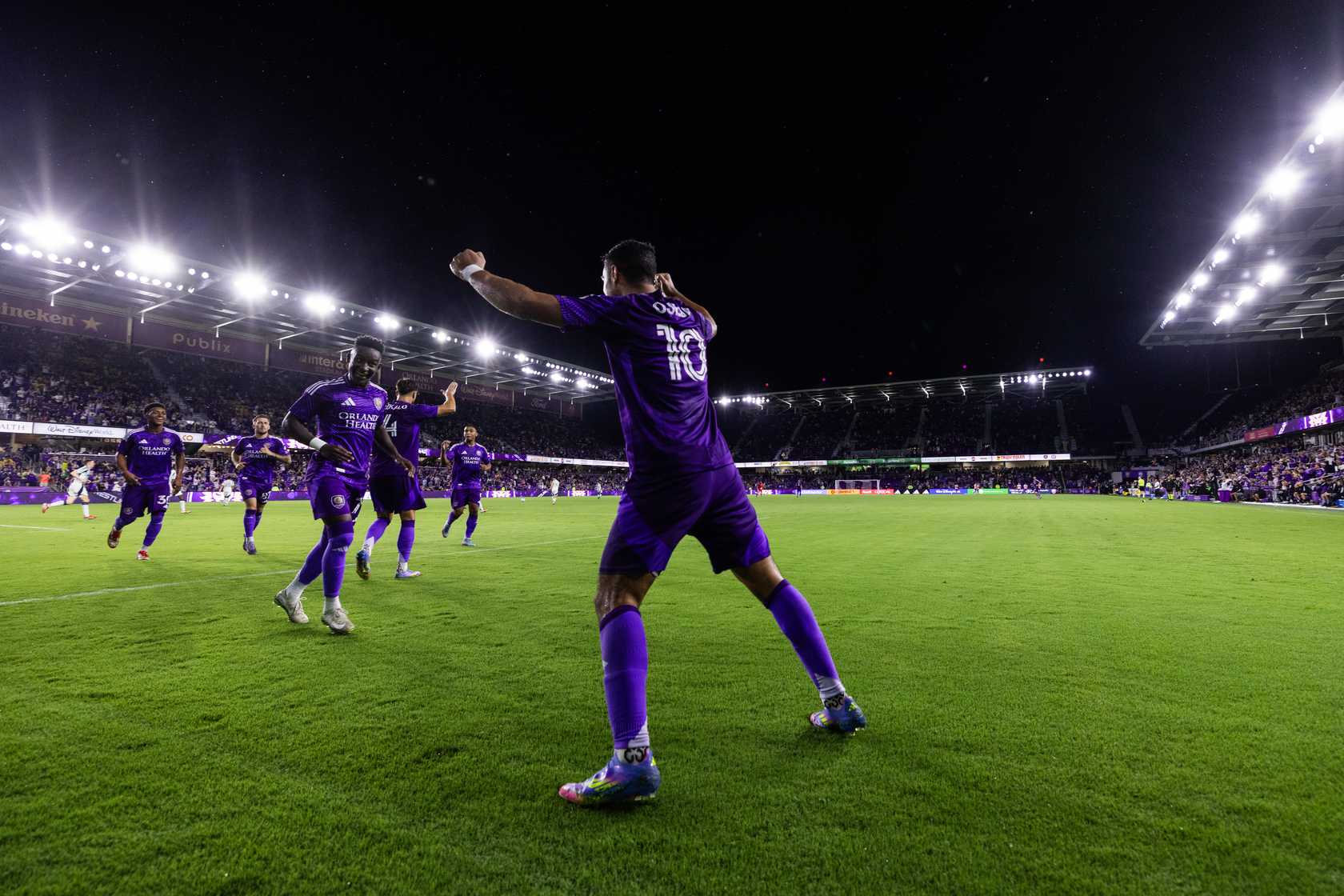
We’re almost to the end of what’s been an extremely packed month of May for Orlando City. After the conclusion of Saturday’s match against the Chicago Fire, the Lions will have played nine matches in the span of 28 days. OCSC has basically played a match every three days, which is an absurd pace. Other than two recent blemishes, Orlando has mostly handled it exceedingly well though, and June presents a much lighter schedule for our brave heroes.
The Lions play just three games next month and will have two weeks off between Saturday’s match against the Fire and their next game. Without any further ado, I will now attempt to peer into the crystal ball and predict the results of Orlando’s three games in June.
Saturday, June 14 — at Colorado Rapids
Orlando will return to action after a two-week layoff by hopping on the purple plane and flying west to take on Colorado. The Rapids are currently eighth in a crowded Western conference table with 22 points, and they are 10 points off the Vancouver Whitecaps at the top of the table. They’ve put together a pretty even season so far with a record of 6-6-4 (W-L-D). The biggest problem for Colorado has been scoring goals, as the Rapids only have 18 goals in 16 games and have been held scoreless five times in the league. They have this week off, and won’t return to action until June 7, when they host Austin FC. I give Orlando City the edge in this match, and hopefully that extra rest will help the good guys hang tough at altitude. The Lions have been defensively sound recently — when they’ve had all 11 men on the field — while also still being able to put the ball in the back of the net several times a game. Shutting down Djordje Mihailovic is going to be key, but I like Orlando’s chances given its recent form and the fact that the Lions will be well rested.
Prediction: Orlando City 3-1 Colorado Rapids.
Wednesday, June 25 — at St. Louis City
I refuse to capitalize every letter in “City” in St. Louis City’s name, because frankly I think it’s a ridiculous stylistic choice. The team also hasn’t been very good this year, so it doesn’t deserve me catering to it in that manner. St. Louis is currently 2-8-5 and only truly woeful campaigns by CF Montreal and the LA Galaxy are saving it from leading the Wooden Spoon race with 11 points. It makes Colorado look like an offensive juggernaut, as it’s only scored 11 goals in 15 games. St. Louis isn’t bad defensively, as it’s only conceded 20 goals, but it’s always going to be a struggle when you average scoring just 0.73 goals a game. Its form was enough to get Head Coach Olof Mellberg fired, and he lasted just over six months on the job. The club hasn’t won since a March 15 match against the Galaxy and has a tricky upcoming slate, with a home match against the San Jose Earthquakes on Saturday, an away game against the Portland Timbers on June 8, and a home match against the Galaxy on June 14. With a week and a half between the Colorado match and this one, I once again like Orlando City in this game. Unless St. Louis can find its shooting boots, I don’t see it offering much threat against a rested Orlando defense that has come on strong since a shaky start to the year.
Prediction: Orlando City 2-0 St. Louis City.
Saturday, June 28 — vs. FC Cincinnati
OCSC wraps up June by returning home to play one of the best teams in the Eastern Conference on short rest. It isn’t ideal, but it isn’t the worst thing in the world either. Cincy has been good this year, compiling a record of 9-4-3 and 30 points to sit second in the East. New signings Evander and Kevin Denkey have been as good as you would expect, as Evander has seven goals and five assists in 14 appearances, and Denkey has nine goals in 15 games. As a team, Cincinnati has scored 24 goals and conceded 22, so it’s been a balanced campaign to this point. It’ll be coming to the end of a stretch of three straight road games, as Cincy will be away to the New England Revolution on June 14 and then at CF Montreal on June 25, so it’ll also be traveling on short rest. That said, aside from the Philadelphia Union, Cincy is the toughest team the Lions will have faced in MLS play, and stopping both Evander and Denkey is far from an easy task. This reeks of a draw that has a couple of goals for each team, so that’s what I’ll be going with.
Prediction: Orlando City 2-2 FC Cincinnati.
There you have it. I’ve scrutinized the tea leaves and you now know what the path ahead holds for the Lions. Be sure to check back in at the end of June so you can marvel at how stunningly accurate my forecast was. Until then, feel free to either disagree or tell me how crystal clear my visions are down in the comments. Vamos Orlando!
Opinion
Pedro Gallese’s Recent Form No Surprise
Pedro Gallese’s recent solid form isn’t anything new, you just need to know where to look.
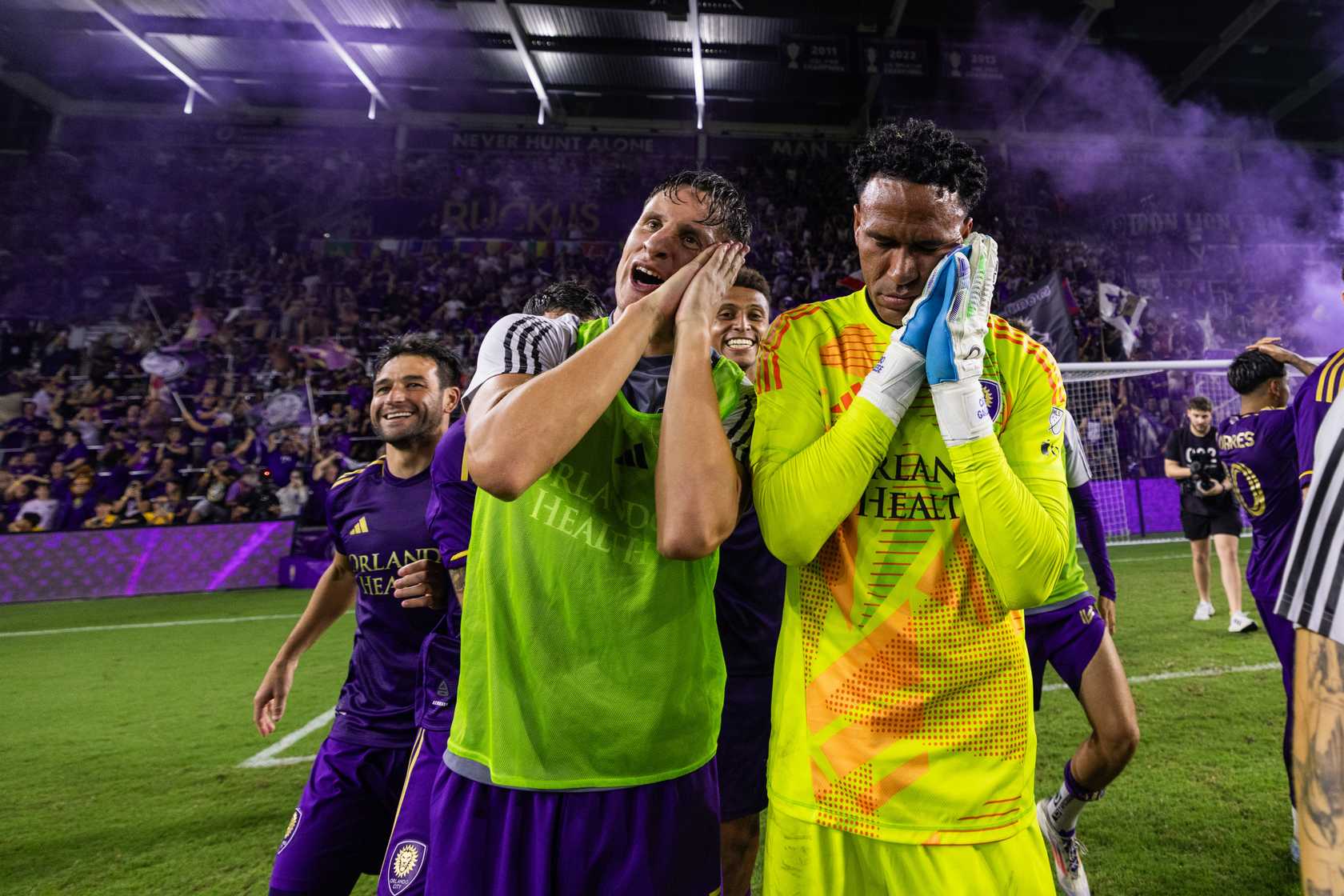
One of the more frustrating narratives surrounding Orlando City at the beginning of the season was the assertion that goalkeeper Pedro Gallese was playing poorly and was costing the Lions points. The main point of emphasis from the detractors was the Lions’ 4-2 opening day loss to the Philadelphia Union, although he also got a lot of flak for his performances against Toronto FC, and during the 2-1 loss to New York City FC. That criticism has started to get quieter in recent weeks, particularly after he made the bench of the most recent MLS Team of the Matchday, but I don’t think he was playing nearly as poorly as some people made him out to be at the start of the season, and his recent performances haven’t come out of nowhere.
So let’s talk about those two big supposed “black marks” on his 2025 resume. Most of the chatter came from the opening game against the Union, with him coming in for criticism in two instances here, and here. I want to specifically address the mention of Gallese allowing six goals on 2.9 post-shot expected goals. Listen, I don’t actually have a problem with the xG stat the way some people do, and I truly think it can be incredibly useful when used properly in certain contexts. I just don’t think the numbers tell the full story here.
Against the Union, three goals came from inside or on the edge of the six-yard box, and were one-touch finishes. Gallese realistically had no chance on two of them (the first and fourth goals), and while the other one came from an acute angle and was mostly right at him, the ball is still coming so fast and from such a short distance that it still feels a bit nitpicky to place the blame entirely on him. Yes, he arguably could have done better, but there are plenty of goalkeepers in this league that aren’t saving that.
The other goal of the night came from a Rodrigo Schlegel error and a first touch shot from the edge of the box that came as El Pulpo was already moving laterally across his goal to shift with the rest of his defense, only for the shot to be heading for the opposite side of the net. Despite the distance the shot is coming from, that one also feels harsh to blame him for in my book. Again, I love xG when it’s used properly, but I just don’t think this is a fair application, as it doesn’t take into account where Gallese is at the time of the turnover-produced shot — only the shooter’s location. I find it pretty hard to look at each one of those goals and honestly say that he should save them. To me, there’s a big difference between something a goalkeeper could do more to save and something they should do more to save.
The other two goals out of the aforementioned six came against Toronto FC, and honestly it’s hard for me to put a ton of blame on him for either of them. The first came off a corner and was a header from inside the six-yard box, and although he should maybe do better considering the angle of the shot and his placement in the goal, the final shot comes from about three yards away. I’m sorry, but that just requires excellent reaction time, and while it’s the sort of shot that we do see saved in MLS sometimes, I’m not sure it’s one that we should expect to see saved. TFC’s final goal of the night was a great strike from distance in the bottom corner that also came through a few bodies, which meant Gallese didn’t see it until fairly late on. Again, to me this is a shot that he could do more to save, but not one that he should do more to save, and that’s an important distinction.
Honestly, the most justified criticism I’ve seen probably comes from here, when speaking about the 2-1 loss to NYCFC. Gallese gave up a huge rebound for the hosts’ second and eventual game-winning goal. Frankly, it wasn’t great at all and it ended up costing Orlando City a point. That being said, he did still make seven saves in that game and kept the Lions in it with a chance to salvage a late point.
Aside from the error against NYCFC though, El Pulpo has largely been mistake free and pretty blameless for the three goals he’s conceded. One was a penalty kick against the New York Red Bulls, and the second was a one-touch finish from about three yards away which also came against the Red Bulls. Go back and watch the film, and you won’t be shocked to hear that I hold him blameless for both. The goal he surrendered against the LA Galaxy wasn’t great, as Christian Ramirez’s flick isn’t exactly traveling at light speed. But, the shot also goes the opposite way of which Gallese’s momentum is already carrying him, so that’s something to consider. Aside from the rebound against NYCFC, this is the one goal he’s given up in 2025 that I really think he should have done better with.
The Peruvian has gotten a lot of praise (and rightly so) for the three straight clean sheets he’s kept in Orlando’s last three games. He’s made 11 saves during that time and got absolutely peppered late against Montreal, when Orlando went down to 10 men (again!). But he’s been making saves all year long, and the one game he didn’t register any (the season opener), was also a game where you can make a real argument that he couldn’t have done a better job of attempting to stop the ball going in than he already did. His save percentage of 73% is 19th out of 33, which is close to bang average; and his clean sheet percentage of 37.5% is tied for ninth.
Oh, and if we want to bring post-shot expected goals back into this, then let’s look at his post-shot expected goals minus goals allowed (PSxG-GA). PSxG-GA uses expected goals to provide a stat that is based on how likely a goalkeeper is to save a shot. The number can be either positive or negative, with a positive number suggesting either a better-than-average shot-stopping ability, or a goalkeeper that’s been luckier than most. Gallese’s PSxG-GA of 1.7 is tied for 13th out of 49 goalkeepers, which ain’t half bad, is it? It’s worth mentioning that some of the rankings are skewed by keepers who only spent a small amount of time on the field and either let in a ton of goals or very few, but that’s the funny thing about raw stats — they need context.
At the end of the day, I’m not trying to sit here and say that Gallese has been flawless this season, is completely blameless for each and every one of the goals he’s conceded, and that every ounce of criticism that’s come his way has been unfair. There are absolutely goals that he should have done a better job on, but even at the time they were written, I think some of the assertions that he was a massive weak point for the Lions were overblown and not properly justified. He’s had a few shaky moments, like any keeper, but the defense in front of him wasn’t doing him any favors at times, and he was still regularly making saves to keep Orlando City in games. While it’s nice that he’s finally getting some plaudits, he’s had himself a perfectly fine 2025 season for the most part. You just have to take the time to look.
Opinion
Orlando City’s Start to the Season a Pleasant Surprise So Far
The Lions have started the new season well enough, but we shouldn’t get too carried away just yet.
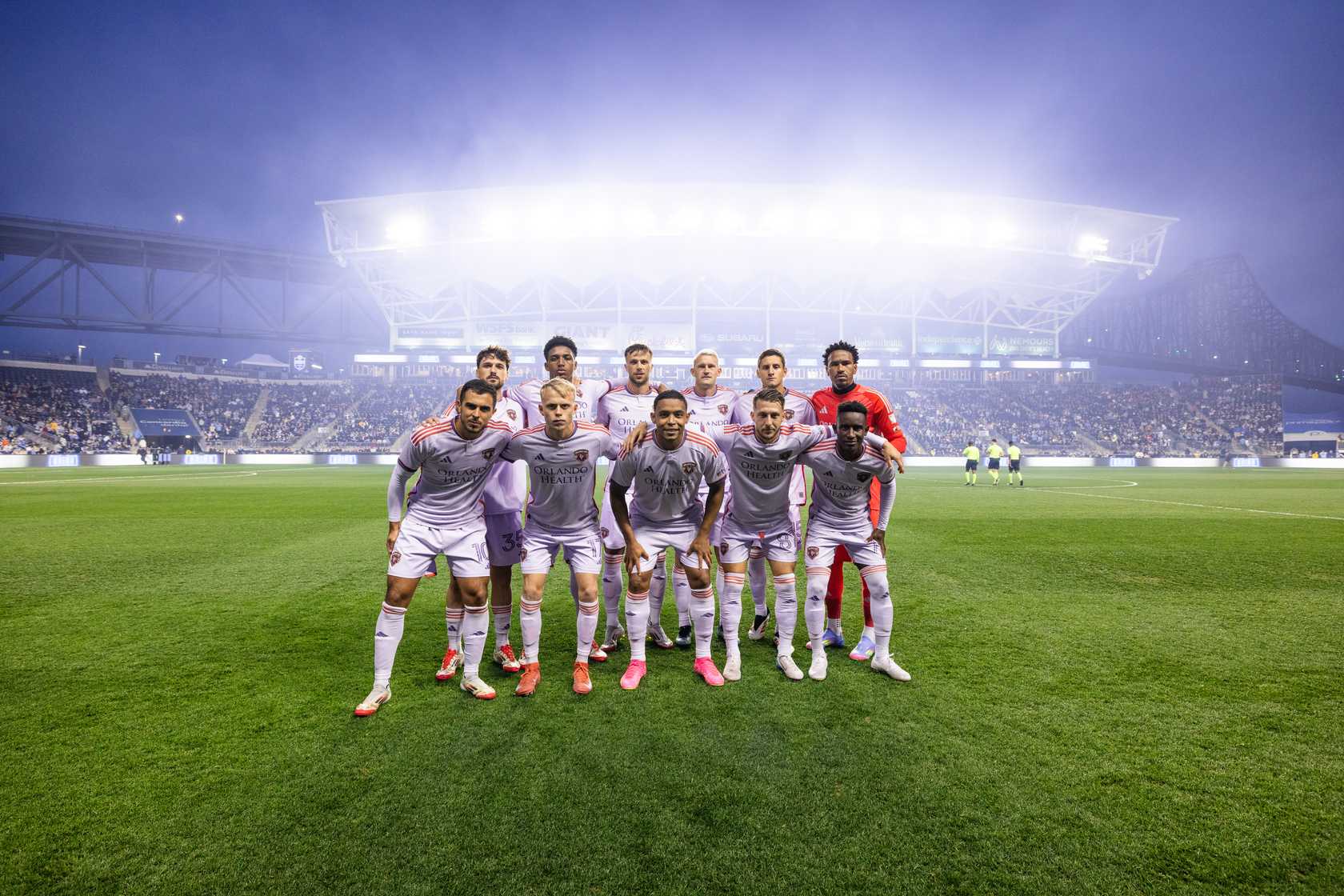
While Orlando City didn’t have a ton of roster turnover to deal with during the off-season, it was really anybody’s guess as to what sort of start the Lions would make to the 2025 Major League Soccer season. There was obviously the loss of all-time leading goal scorer Facundo Torres to deal with, then Wilder Cartagena was lost for the year in preseason, although the club did a great job in landing Eduard Atuesta to replace him. There were also questions about depth at left back, center back, and central midfield. It was anyone’s guess on how Marco Pasalic would adjust to life in MLS, and there were serious questions about whether the Lions had enough firepower up front with Duncan McGuire unavailable to start the season while he recovered from shoulder surgery.
While the club returned the vast majority of the guys who played key roles in helping reach the Eastern Conference final, on paper, the roster didn’t improve and arguably got weaker, so was it truly realistic to expect the team to go a step farther and make the final this year?
Despite all of those concerns, and despite a confidence-shaking 4-2 opening game loss to the Philadelphia Union, Orlando has largely made a good start to the campaign. The Lions have compiled a respectable 3-2-3 record and have 12 points to show for it, currently sitting in seventh place in the Eastern Conference, six points behind the first-place Columbus Crew.
Even in the two losses, it’s hard to make the argument that OCSC played truly bad games on the whole. Rather, the Lions were undone by moments of bad defending and losses of concentration that led to silly mistakes, particularly against the Union. The shaky defending has certainly been one of the bigger concerns, especially on an Oscar Pareja-coached team, but things have begun to look better after keeping two straight clean sheets.
Ironically, even though the offense seemed to be most people’s biggest concern before the season started, it’s been the part of the team that has consistently functioned at the highest level. Before the two 0-0 draws, Orlando had scored the most goals in the league, and despite being held scoreless twice in a row, they still have the third-most goals scored. Out of OCSC’s six games played with a first choice XI, the Lions have scored more than one goal four times. Even in the games when they haven’t been as prolific, or have largely been on the back foot, the Lions have still managed to carve out a healthy number of chances. While their finishing has let them down at times, they’ve still managed to get several good looks at goal in every game, and that’s half the battle.
All in all, it’s been a perfectly respectable start to the season, and the team honestly has performed higher than my (probably slightly pessimistic) expectations. While the start hasn’t been white hot, it’s been nice to not see the sort of slow start that so often has seemed to plague this club during Pareja’s tenure at the helm.
That being said, I think it’s important to place the beginning of the year in the proper context. It’s worth noting that of the teams that Orlando has played to this point, Philadelphia is the only one currently above the playoff line (although the New York Red Bulls occupy the last play-in spot). The Lions have beaten an LA Galaxy team that is the worst in the West; Toronto FC, which is second from the bottom in the East; and D.C. United, which is third from the bottom in the East. They drew the fifth-place Union on the road, and lost to NYCFC at the baseball stadium. But it has to be said that Orlando has faced a noticeable lack of top shelf opponents so far.
Essentially, Orlando has played three bad teams, two decent ones, and one that started very well but has cooled off in recent weeks (twice). Of course, OCSC can’t do anything about that, but it’s worth asking if the solid start to the season is due to the Lions legitimately being a good team, or if it’s more of a paper tiger situation where they just haven’t had to play many tough opponents yet.
There isn’t really any way of knowing for sure, and there won’t be any hints for awhile. With the way the standings currently look, Orlando won’t face a team above the playoff line until they go up against Charlotte FC on the road on May 14. I don’t bring all of this up to try to dampen the mood, but I just don’t think we have a truly accurate idea of this team’s level yet. Which is fair and totally fine, after all we’re only eight games into the season.
That doesn’t mean that we can’t give OCSC its due for a solid start to the year. It hasn’t been perfect by any means, but the team has done more good than bad, and the Lions’ current place in the standings reflects that. We should still keep things in perspective and resist the urge to dole out too much praise just yet, but we can be happy with what we’ve seen so far.
-
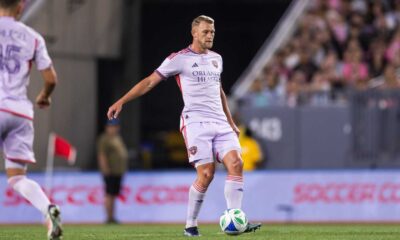
 Orlando City1 week ago
Orlando City1 week agoOrlando City vs. Portland Timbers: Preview, How to Watch, TV Info, Live Stream, Lineups, Match Thread, and More
-
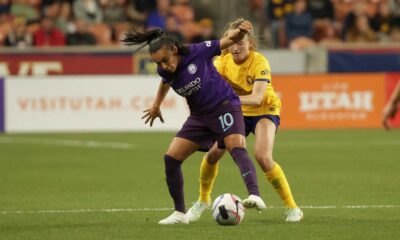
 Orlando Pride1 week ago
Orlando Pride1 week agoOrlando Pride vs. Utah Royals: Preview, How to Watch, TV Info, Live Stream, Lineups, Match Thread, and More
-
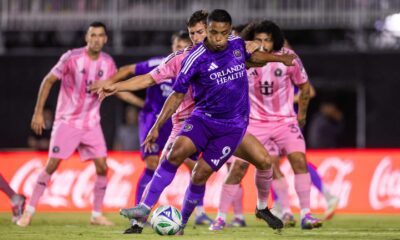
 Orlando City2 weeks ago
Orlando City2 weeks agoOrlando City vs. Inter Miami: Final Score 3-0 as Lions Romp in South Florida
-

 Orlando City2 weeks ago
Orlando City2 weeks agoOrlando City vs. Nashville SC: Five Takeaways
-
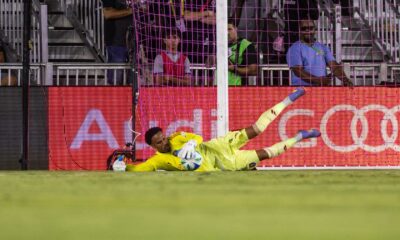
 Orlando City2 weeks ago
Orlando City2 weeks agoOrlando City vs. Inter Miami CF: Player Grades and Man of the Match
-
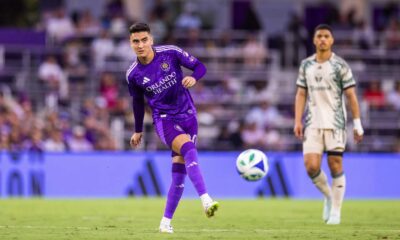
 Orlando City1 week ago
Orlando City1 week agoOrlando City vs. Portland Timbers: Final Score 1-0 as Lions Tie Club-Record 12-Game Unbeaten Streak
-
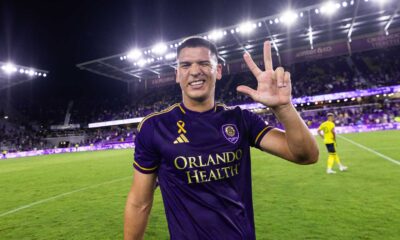
 Orlando City2 weeks ago
Orlando City2 weeks agoOrlando City vs. Nashville SC, U.S. Open Cup: Preview, How to Watch, TV Info, Live Stream, Lineups, Match Thread, and More
-
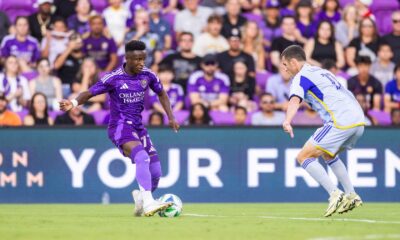
 Orlando City5 days ago
Orlando City5 days agoOrlando City vs. Atlanta United: Preview, How to Watch, TV Info, Live Stream, Lineups, Match Thread, and More


